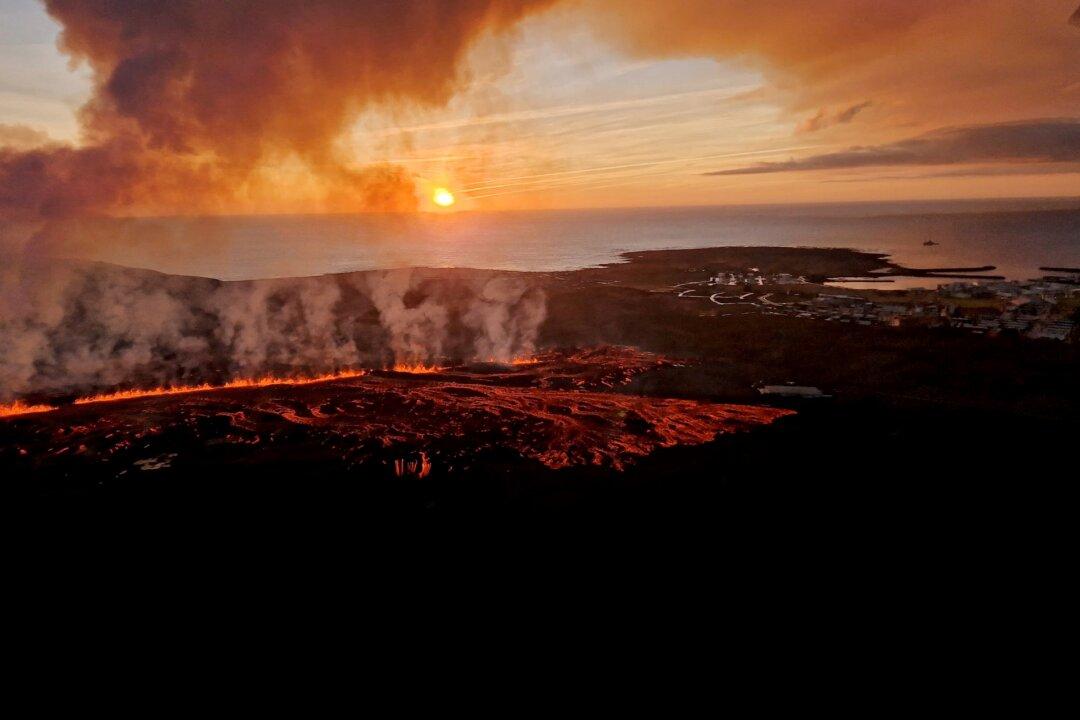REYKJAVIK, Iceland—A volcano that erupted in southwest Iceland for the second time in less than a month appeared to be significantly less active on Jan. 15 despite indications that magma is still flowing underground.
“A black day” read the front-page headline of Icelandic daily Morgunbladid across an image of bright-orange lava fountains and houses burning in the town of Grindavik, some 40 kilometers (25 miles) south-west of the capital Reykjavik.
Molten lava flows reached the outskirts of Grindavik around midday on Jan. 14, setting three houses alight, although the town was evacuated earlier and there was no immediate danger to people.
The crack in the earth’s surface that opened close to Grindavik on Jan. 14 was no longer active, and lava production from the larger fissure north of the town was decreasing, volcanologist Rikke Pedersen told Reuters.
“Activity has dropped significantly overnight,” she said on Jan. 15.
“It’s not certain if what we’re seeing is already the end of this eruption,” she said, adding that GPS measurements still showed geological movements and indicated that magma continued to flow in a corridor beneath the town.
It was the second eruption on the peninsula of Reykjanes in four weeks and the fifth since 2021.
Live video footage showed glimpses of orange lava still flowing to the surface but at smaller volumes, and further away from the town.
“Unfortunately (the lava) went a little bit more south than we had hoped for,” the head of Iceland’s Civil Protection and Emergency Management, Vidir Reynisson, told a news conference late on Jan. 14.
Nevertheless, the defensive barriers built to the north of Grindavik had helped divert the flows of lava to the west, away from the town, Mr. Reynisson said.
Residents of Grindavik, a town of some 4,000 people before it was evacuated in November, said it was difficult to watch televised images of the fires.
“This is serious; it’s basically as bad as it can possibly get. Although it might get even worse, who knows,” evacuated resident Jon Gauti Dagbjartsson told Reuters.
“I actually live in the house that I was born in and it’s tough ... to think that this town might be over, and I would have to start all over somewhere else. But if that’s the case, then that’s exactly what we'll do,” he said.
The Icelandic government was to meet on Jan. 15 to decide on support for the people of Grindavik.
“We need to put a lot of extra efforts into finding more housing, suitable housing,” Prime Minister Katrin Jakobsdottir said.







